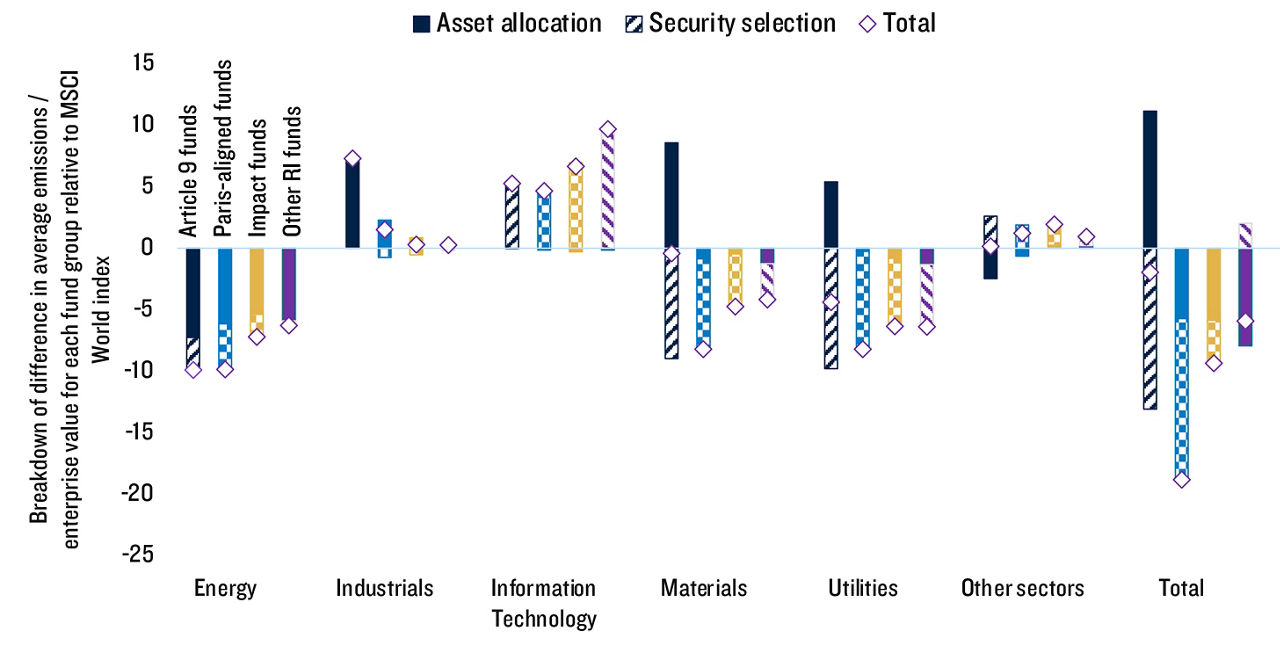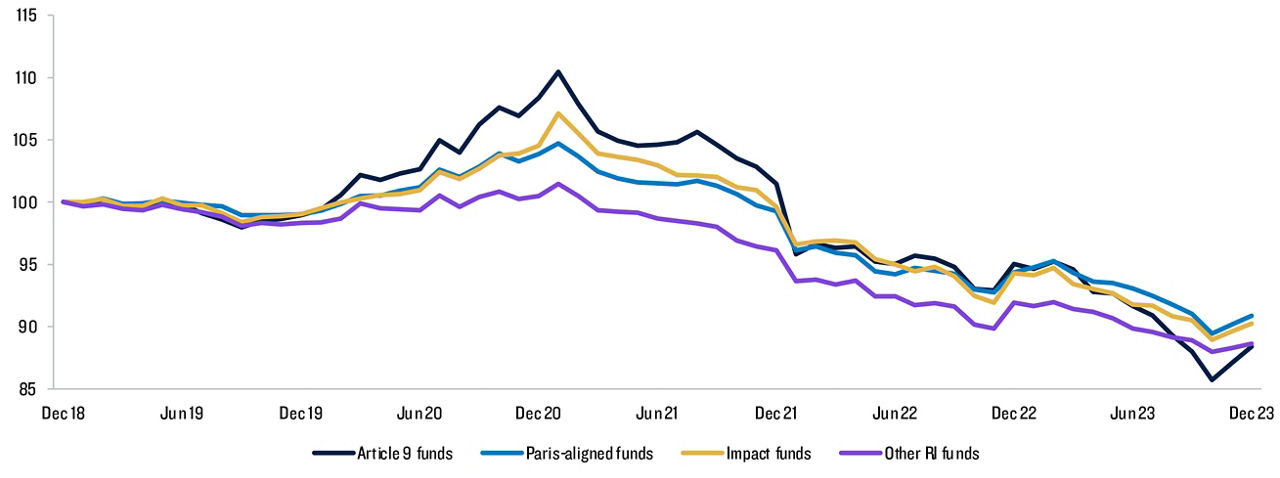Executive summary
Concerns about the environment, or about a range of social outcomes, are increasingly important to many asset owners. But their CIOs are faced with an array of responsible investing (RI) strategies: which ones best fit their objectives? This paper uses the RI fund universe to provide these CIOs with a roadmap. In addition, CIOs without explicit environmental, social and governance goals benefit from a deeper awareness of these strategies that are influencing global market pricing.
RI funds are categorised in different ways, and while there are overlaps, the resulting labels emerge in our analysis as being effective at distinguishing key differences in approach.
Impact funds target environmental and social outcomes alongside financial returns; Paris-aligned funds seek to invest in line with the 2015 treaty to reduce emissions; Article 9 funds (within Europe) have sustainability as their core objective; these can be compared with each other and with Other RI funds that follow an RI approach but do not fall into the previous subgroups.
The paper looks at both ex-ante metrics - how are the portfolios constructed? - and ex-post measures - how have they performed? - to analyse the different styles.
The first figure below compares average sector tilts for the four RI fund styles, all relative to the MSCI World index. Greenhouse gas emissions are largest within the Utilities, Materials, Energy and Industrials sectors. All four RI styles are consistently underweight the Energy sector. The Paris-aligned funds are also underweight Utilities and Materials. Article 9 funds follow a different path and are overweight some of those sectors with high emissions! Whereas Paris-aligned funds must have low emissions - and continue to lower emissions every year - Article 9 funds focus on sustainability. They grasp the opportunity to invest in companies in high emission sectors which are embarking on a decarbonization path and may have faster rates of emission reduction in the future.
Sector tilts of different RI fund styles
(Global equity RI funds, 31 December 2023)
The effort expended by these funds in selecting companies can be seen more clearly by digging deeper: sector exposures tell only part of the story. All sectors have companies that are high and low GHG emitters. Consequently, RI funds can exercise security selection to affect their overall level of financed emissions. The figure below shows for example that although Article 9 funds are overweight Utilities, security selection within sectors allows these funds to achieve an underweight of financed emissions compared to the broad index.
Impact funds and Paris-aligned funds are underweight most high-emitting sectors, but here too security selection drives emissions down further.
Paris-aligned funds achieve the lowest level of financed emissions, but stand out due to their holdings of companies that have already rapidly decarbonised in recent years. These funds will likely need to adopt more concentrated tilts in future to maintain the emissions path to which they are committed.
Contributions of Asset Allocation And Security Selection Across Sectors To Portfolio Emission Levels
(Global equity RI funds, 31 December 2023)
The average performance of the four RI styles over the last 5y relative to the MSCI World index is shown below. For all groups, returns were strong prior to and during the pandemic, but have been more challenged in the years since. Active fund fees explain some of the downward trend over time, but the groups exhibit very strong co-variation, with Article 9 funds and Impact funds having the highest beta to the common drivers of their performance. These performance differentials are related to fund flows: periods when flows have been into RI funds have coincided with RI funds outperforming the broader market; similarly flows out are broadly aligned with periods of underperformance.
Average performance of different fund groups relative to MSCI World benchmark
(Global equity RI funds, 2018-2023)
All styles of RI fund can and do achieve lower levels of financed emissions than market indices. But we found that the various style descriptors point to how different funds go further. Paris-aligned funds deliver, as they advertise, the largest emissions reductions, but since they tilt towards sectors with low emissions and towards companies with existing decarbonisation records, this style is less able to drive real-world emissions reductions. Article 9 and Impact styles, in contrast, have demonstrated their ability to invest in companies at an earlier stage of their decarbonization path. Investors here may therefore be able to benefit financially from the green transition, despite relatively higher levels of financed emissions.




